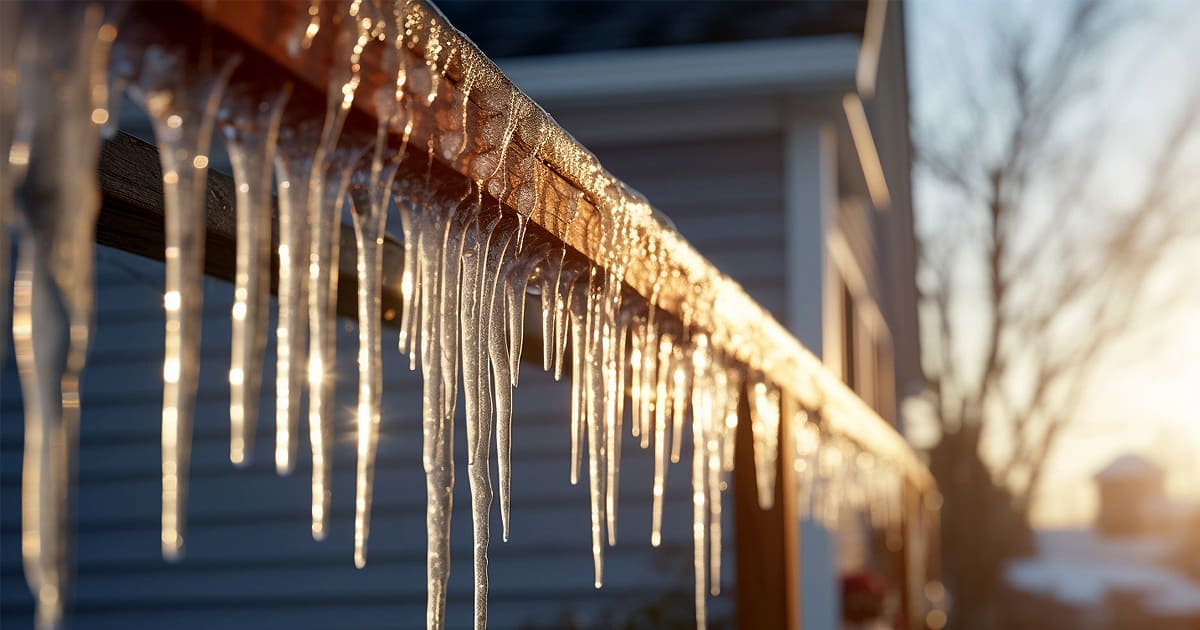Extreme cold weather can have a significant impact on the structural integrity of a roof. The effects of low temperatures on roofs are often underestimated, yet they can lead to costly repairs if not addressed promptly. In this section, we will explore how winter weather can affect roofing systems and discuss the potential damage that can occur as a result.
When temperatures drop below freezing, several factors come into play that can compromise the stability and functionality of a roof. From freezing rain and snow accumulation to ice dams and thermal expansion, these conditions pose unique challenges for homeowners and property managers alike.
Understanding the potential risks associated with cold weather is crucial for maintaining the longevity of your roof. By recognizing the effects that extreme cold can have on roofing systems, you can take proactive measures to prevent damage and ensure the safety and durability of your home or building.
In the following sections, we will delve into specific ways in which low temperatures impact roofs, including common issues such as leaks, cracks, weakened materials, and structural damage. We will also provide practical tips on how to mitigate these risks and protect your roof during winter months.
So let’s explore in detail how cold weather can impact the structural integrity of a roof and what steps you can take to safeguard your property from potential winter-related damages.
The Role of Freezing Temperatures in Roof Material Deterioration
Freezing temperatures can have a significant impact on the deterioration of roof materials. One of the main concerns is frost damage, which occurs when water freezes and expands within the roofing system. This expansion can lead to cracks, fractures, and other forms of damage in roofing materials such as shingles.
Ice dams are another consequence of freezing temperatures that can contribute to roof degradation. Ice dams occur when snow on the roof melts due to heat escaping from the interior of the building and then refreezes at the edges or in gutters. As ice builds up, it can cause water to back up under shingles, leading to leaks and further damage.
Furthermore, freeze-thaw cycles play a significant role in accelerating the deterioration of roofing materials. These cycles occur when moisture penetrates into small cracks or gaps in the roof during warmer periods and then freezes during colder temperatures. The expansion caused by freezing can worsen existing damage or create new ones, ultimately compromising the integrity of the roof.
To mitigate these issues, it is crucial for homeowners and property managers to ensure proper insulation and ventilation in their roofs. This helps minimize heat loss and prevents ice dams from forming. Regular inspections and maintenance are also essential for identifying any early signs of damage caused by freezing temperatures so that repairs can be promptly addressed.
In conclusion, freezing temperatures pose a threat to roofs through frost damage, ice dams formation, and freeze-thaw cycles. Understanding these risks allows homeowners and property managers to take necessary precautions to protect their roofs from deterioration caused by freezing conditions.
Potential Risks: Common Roof Problems Caused by Extreme Cold Weather
Extreme cold weather can cause the formation of ice dams. Ice dams occur when ice/snow on the roof melts due to heat escaping from the interior of the building and then refreezes at the eaves. This ice buildup prevents proper drainage and can lead to water penetration through the roof, causing damage to ceilings, walls, and insulation.
Snow accumulation on roofs can also pose risks in cold weather conditions. Excessive snow loads can put significant stress on a structure, potentially leading to roof collapse if not properly addressed or cleared in a timely manner.
Additionally, condensation issues may arise in colder climates. When warm air from inside meets cold surfaces within an attic or crawl space, condensation can form. This moisture buildup can lead to mold growth, rotting wood, and other structural problems if not properly ventilated or insulated.
It is crucial for homeowners in areas with extreme winter weather conditions to be proactive in preventing these common roof problems. Regular inspections, proper insulation and ventilation measures, as well as prompt removal of snow accumulation are essential steps towards maintaining a safe and intact roofing system during cold spells.
Proper insulation and ventilation play a crucial role in protecting structures from cold-related damage. In cold climates, effective insulation is essential to maintain a comfortable indoor temperature and reduce energy consumption. Insulation acts as a barrier, preventing heat loss through walls, ceilings, and floors.
In particular, insulation in the attic is vital for preventing ice dams during winter months. Ice dams occur when warm air from the interior of a building escapes into the attic, causing snow on the roof to melt and then refreeze at the eaves. This can lead to water damage inside the building and potential structural issues.
By ensuring proper attic insulation, such as using materials with high R-values and sealing any air leaks or gaps, homeowners can minimize heat transfer between their living spaces and the attic. This helps maintain a consistent temperature throughout the home while reducing energy costs.
Ventilation systems also play a critical role in protecting roofs during extreme temperatures. Proper airflow allows for efficient moisture control by preventing condensation buildup that can lead to mold growth or rotting of roof materials.
In colder climates, ventilation systems help prevent ice dam formation by maintaining uniform temperatures on the roof surface. By allowing cold air to circulate under the roof deck, these systems help keep snow from melting unevenly and refreezing at eaves.
Furthermore, adequate air circulation during extreme temperatures helps prevent excessive heat buildup in attics or crawl spaces. This reduces strain on cooling systems during hot summers while promoting energy efficiency.
Investing in proper insulation for cold climates and implementing effective ventilation systems are crucial steps in protecting buildings against cold-related damage. These measures not only ensure comfort but also contribute to energy savings and prolonging the lifespan of structures by minimizing potential issues caused by extreme temperatures.
Maintenance Tips to Protect Your Roof from Extreme Cold Conditions
To ensure the longevity and integrity of your roof, it is essential to follow a winter roof maintenance checklist. This includes taking proactive steps to remove snow safely from the roof and clearing gutters to prevent ice buildup.
One of the most important tasks in winter roof maintenance is removing ice/snow safely from the surface. Accumulated snow can add excessive weight to your roof, leading to structural damage or even collapse. Using a roof rake with a long handle can help you safely remove snow from the ground without having to climb up on the roof.
Clearing gutters is another crucial step in protecting your roof during extreme cold conditions. When gutters are clogged with leaves, debris, or ice dams, they can obstruct proper drainage and cause water backup. As temperatures drop, this trapped water can freeze and expand, leading to gutter damage and potential leaks into your home. Regularly clearing out gutters will help prevent ice buildup and maintain proper water flow.
In addition to these specific tasks, it’s also important to inspect your roof for any signs of damage or vulnerability before winter sets in. Look for loose or damaged shingles, cracks in flashing or seals around vents and chimneys, as well as any areas where moisture may be penetrating.
By following these maintenance tips and incorporating them into your winter routine, you can protect your roof from extreme cold conditions and ensure its durability throughout the season. Remember that regular inspections and timely repairs are key to maintaining a healthy roofing system all year round.



